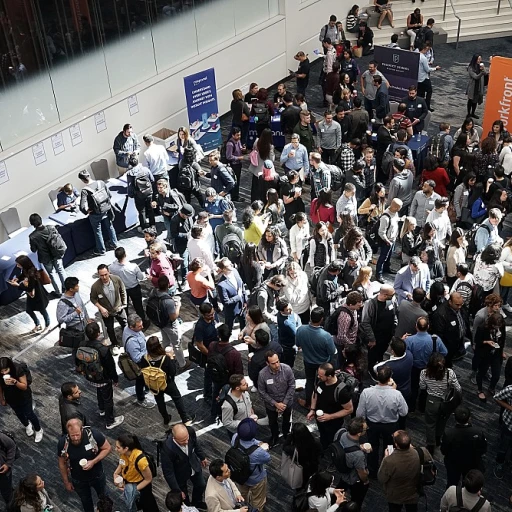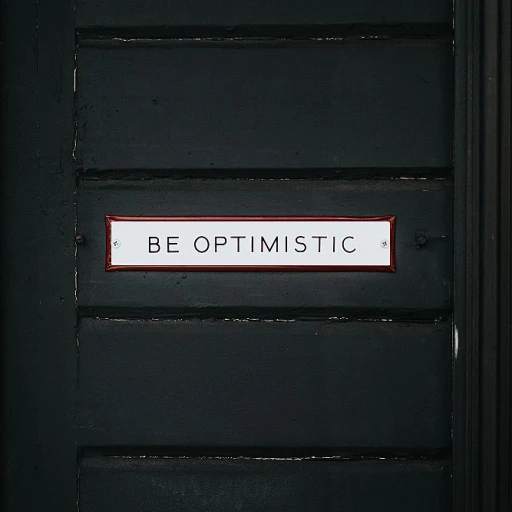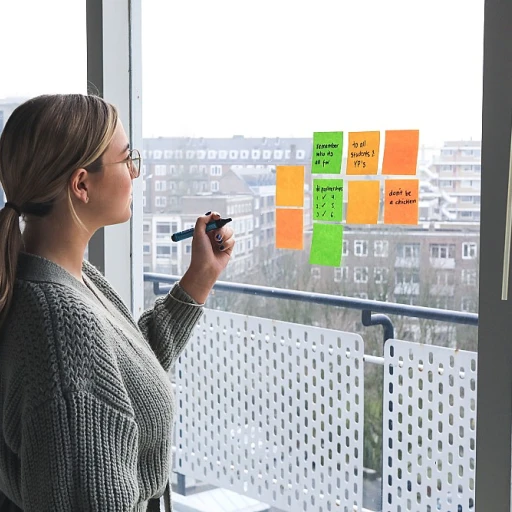
The Role of Leadership in Shaping Workplace Culture
Leadership Styles and Their Influence on Workplace Culture
In any organization, leadership plays a pivotal role in determining the culture within the workplace. The leadership style adopted by management can significantly affect organizational culture and subsequently, employee engagement. Understanding organizational behavior is crucial as leaders shape the environment through their decision-making processes, communication styles, and overall management techniques. Effective leadership can foster a positive work environment, which enhances organizational performance and productivity. Leaders are instrumental in setting the tone for communication patterns, which are closely linked to employee engagement. For instance, open and transparent communication from leadership encourages employees to voice their opinions and ideas, leading to a more engaged workforce. Furthermore, different leadership styles impact the dynamics within work environments. A democratic leadership style promotes collaboration and idea sharing, while an autocratic style may stifle creativity and reduce employee morale. The ability to adapt leadership styles to meet the needs of the workforce is essential for maintaining high levels of employee engagement and morale. Organizations aiming to improve employee loyalty must consider the influence of leadership on organizational policies and employee behavior. Leaders who prioritize an inclusive and supportive organizational culture can reduce turnover by fostering a sense of belonging among employees. For a deeper understanding on how workplace behavior impacts employee retention, it's essential to delve into human resources strategies and the Hawthorne studies, which highlight the significance of human behavior and organizational theory in shaping company culture. These insights can guide leaders in adopting practices that bolster retention and enhance workplace dynamics.Communication Patterns and Their Effect on Employee Engagement
Fostering Meaningful Interactions in the Workplace
Effective communication is a pivotal aspect of organizational behavior, profoundly influencing employee engagement and workplace dynamics. When understanding organizational communication, it's crucial to recognize its role in enhancing or hindering workforce productivity. The quality of interactions between employees and management directly impacts not only individual performance but also the overall company culture.
Organizational culture is shaped by communication patterns that exist within a company. These patterns, whether formal or informal, influence how employees perceive their roles and the organization as a whole. Open and transparent communication fosters a positive work environment where employees feel valued and understood. Conversely, a lack of communication or poor communication can lead to misunderstandings and decreased morale among employees.
Key Aspects to Consider:
- Clarity and Consistency: Employees are better able to align their goals with organizational objectives when messages from leadership are clear and consistent.
- Feedback Mechanisms: Encouraging feedback helps employees feel heard and can improve decision-making processes within the organization.
- Two-Way Communication: Promoting dialogue rather than a one-sided flow of information empowers employees, boosting engagement and satisfaction.
Research in organizational behavior suggests that effective communication practices can directly enhance organizational performance. The adoption of modern communication technologies can further support efficient information exchange and collaboration across different levels of an organization.
By fostering meaningful interactions in the workplace, companies can strengthen their organizational behavior and enhance employee engagement, ultimately contributing to improved workplace dynamics and sustained competitive advantage.
The Influence of Team Dynamics on Employee Morale
Enhancing Employee Morale Through Effective Team Dynamics
Team dynamics play a pivotal role in the overall effectiveness and morale of an organization’s workforce. The collective behavior and performance of a team directly influence how employees engage with their work, interact with each other, and their perception of the organizational culture. Effective work environments are characterized by positive interactions among team members, which are crucial for achieving high employee morale. A study in organizational theory emphasizes the importance of understanding how different team dynamics affect human behavior in the workplace. When the dynamics within a team are aligned with the organizational culture, employees tend to show higher levels of job satisfaction, engagement, and productivity. Moreover, healthy team dynamics encourage open lines of communication, making it easier for employees to express their concerns and ideas. This, in turn, fosters a more inclusive work environment where diverse perspectives are respected and integrated into decision-making processes. Companies that value positive team dynamics and foster such an environment often see a significant enhancement in organizational performance. Leadership styles also have a meaningful impact on team dynamics and, consequently, on employee morale. Leaders who prioritize clear communication and active listening tend to cultivate a supportive culture where employees feel valued and appreciated. This leads to a healthier workplace dynamic, reducing stress and promoting better psychological safety for employees. To sustain high morale and positive work dynamics, organizations should consistently evaluate their team dynamics. Incorporating a systematic approach to understanding organizational behavior can provide insights that help in formulating strategies for employee retention and motivation. Organizations can significantly benefit from studies like the Hawthorne studies, which highlight how changes in work environments affect employee behavior and productivity. Aligning team dynamics with the company culture requires a proactive approach to management and communication. By promoting a culture of collaboration and mutual respect, organizations can create an environment that nurtures both personal and professional growth of employees. For further insights into elevating performance through strategic planning, consider exploring the essential questions to elevate your performance review. The holistic integration of understanding organizational behavior and team dynamics is instrumental in fostering a positive and cohesive workplace atmosphere.The Impact of Organizational Policies on Employee Loyalty
Organizational Policies and Their Influence on Workforce Loyalty
Understanding how organizational policies shape workplace dynamics is crucial for fostering employee loyalty. Companies must be intentional with their policy creation, ensuring that they align with the values and culture of the organization. By carefully crafting policies that reflect organizational behavior, companies can boost employee loyalty.
Here are a few ways organizational policies impact employee loyalty:
- Work Environment: Policies regarding flexibility, work-life balance, and remote work can enhance employee satisfaction and commitment. When employees feel their personal needs are being considered, their loyalty to the company increases significantly.
- Organizational Culture: Policies that promote a positive work environment and support inclusivity and diversity contribute to a strong sense of belonging among employees. An inclusive culture encourages employees to stay invested in their roles and the company.
- Performance Management: Transparent and fair performance evaluation processes can boost employee morale. Organizations that implement clear feedback mechanisms foster trust and ensure employees feel valued for their contributions.
Efforts to address conflict swiftly through effective policies can minimize turnover, positively influencing employee retention. Healthy communication patterns and a focus on robust leadership, as highlighted in previous sections, complement these efforts.
In understanding organizational behavior and creating policies that resonate with employees, companies can cultivate a loyal, engaged workforce ready to excel in an ever-changing workplace environment.
Addressing Conflict and Its Role in Employee Turnover
Strategies to Mitigate Workplace Conflict and Turnover
Conflict in the workplace is an inevitable part of any organizational environment. When left unaddressed, it can significantly impact employee turnover rates, as well as disrupt the organizational behavior and culture. A comprehensive understanding of conflict resolution strategies is critical for companies aiming to retain top talent and ensure a healthy workplace.
Organizations should focus on enhancing communication channels and promoting open dialogue to prevent misunderstandings that could escalate into conflicts. This is closely tied to fostering a supportive workforce and a positive work environment where employees feel heard and valued. Encouraging transparency in company policies and decision-making processes can strengthen organizational performance and employee loyalty.
Training in conflict resolution and communication techniques is also paramount. By equipping employees and leaders with the knowledge and tools needed to navigate and resolve conflict effectively, organizations can boost employee engagement and productivity. Investing in behavioral studies and organizational theory can provide valuable insights into human resources management and the development of effective conflict management strategies.
Organizations should strive to maintain a balance between providing guidance and allowing autonomy within teams. This balance often leads to increased job satisfaction and reduced turnover rates, benefiting the organization's overall performance. By fostering a culture that embraces diversity and inclusivity, companies can enhance employee behavior and workplace dynamics, resulting in a more stable and engaged workforce.
The Future of Work: Adapting Organizational Behavior for Retention
Adapting to the New Normal in the Workplace
As organizations navigate the ever-evolving landscape of work environments, understanding organizational behavior becomes crucial for retaining talent. The future of work demands a shift in how companies approach their workforce, emphasizing flexibility, inclusivity, and continuous learning.
Embracing Flexibility and Remote Work
One significant change in organizational culture is the growing acceptance of remote work. Companies that adapt their management styles to support flexible work arrangements often see increased employee engagement and productivity. This shift requires a reevaluation of leadership styles and communication patterns to ensure that remote employees remain connected and motivated.
Fostering Inclusivity and Diversity
Organizations that prioritize inclusivity and diversity in their workplace dynamics tend to experience higher levels of employee loyalty. By creating a positive work environment where diverse perspectives are valued, companies can enhance their organizational performance and reduce turnover rates. This approach aligns with the understanding that diverse teams often drive innovation and better decision-making.
Investing in Continuous Learning and Development
To maintain a competitive edge, companies must invest in the continuous development of their employees. Providing opportunities for skill enhancement not only boosts employee morale but also strengthens the overall organizational culture. This investment in human resources is a critical component of effective workforce management and retention strategies.
Leveraging Technology for Enhanced Communication
Technology plays a pivotal role in shaping workplace dynamics. By integrating tools that facilitate seamless communication and collaboration, organizations can improve employee engagement and organizational performance. As discussed earlier, effective communication patterns are essential for maintaining a cohesive work environment.
In conclusion, the future of work requires organizations to be agile and responsive to the changing needs of their employees. By embracing flexibility, fostering inclusivity, investing in development, and leveraging technology, companies can create a thriving organizational culture that supports long-term employee retention.












